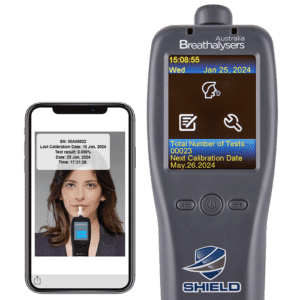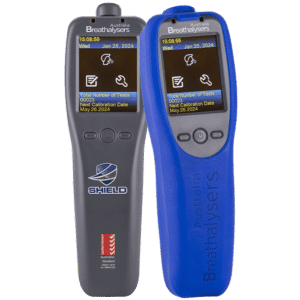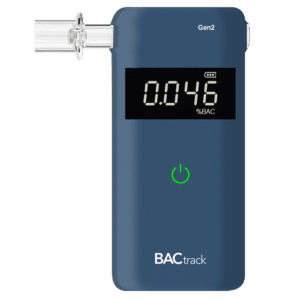Drug Alcohol Screening Test: Definition, Types, and Understanding the Results
11 January, 2024

Using illegal drugs and consuming excessive amounts of alcohol can be detrimental. It is a significant public health concern, affecting everyone. To address this issue effectively, drug and alcohol screening tests play a vital role. It is a method of detecting the presence of substances in the body. Individuals and organisations can choose various drug and alcohol tests. There are alcohol breath tests, urine drug tests, and blood tests. A positive result means a person has consumed drugs or alcohol.
Drug and alcohol abuse is a widespread problem that has far-reaching consequences. It can lead to physical and mental health issues, impaired judgment, accidents, violence, and death. Thus, employers often require their employees to undergo testing to ensure a safe and productive work environment. Also, police officers conduct random roadside tests to detect and deter drink driving cases. The article will present what substance testing is, including the different types and understanding of the test outcomes.
Definition of a Drug and Alcohol Screening Test
A drug and alcohol screening test is a way to detect the presence of substances in the system of people. Qualified professionals can administer the test by collecting breath samples, urine samples, and blood samples. Companies, law enforcement, and healthcare professionals utilise the test. Consequently, they can ensure safety, assess substance use patterns, and make informed decisions.
Drug testing is the process of identifying illegal or prescription drugs in the body. On the other hand, alcohol testing is for assessing alcohol consumption and intoxication levels. Both tests are crucial tools, as they prevent accidents, maintain productivity, and provide the necessary support to individuals struggling with addiction.
The effects of alcohol and drugs can pose a threat to the users and others around them. Therefore, many businesses implement testing policies as part of their safety protocols. In addition, police agencies identify intoxicated drivers. Medical practitioners rely on the test to monitor patients who may be at risk for alcohol or drug abuse. Also, it helps those who are undergoing treatment for addiction.
Reasons for Taking the Test
- Substance abuse treatment programs: Individuals participating may be mandated to submit to regular testing as part of their recovery plan.
- Pre-employment screening: Many employers require drug and alcohol screening. It is usually a part of the hiring process.
- Random testing: Some companies or police officers conduct random tests to deter drug or alcohol abuse.
- Post-accident testing: After a workplace or road accident, involved individuals need testing to determine if substance use was a contributing factor to the accident.
- Compliance with regulations: The law requires industries, such as transportation and healthcare, to have drug and alcohol screening programs to comply with industry regulations.

Types of Drug and Alcohol Screening Tests
Several drug and alcohol screening tests are available for people to choose from. One of the most common is breath testing. It utilises a breathalyser device, which measures alcohol concentration levels. The result determines if an individual is under the influence. Law enforcement officials typically use it during traffic stops because it can provide instant results.
Urine tests are another type of screening method. It can detect drugs and alcohol metabolites in the body. Many businesses utilise this method to maintain a safe workplace. The test is relatively non-invasive and cost-effective. Thus, it is widely used for pre-employment drug screens or random alcohol screens. They can easily buy testing kits for convenience.
Blood testing offers the most accurate and comprehensive results when it comes to substance screening. It can detect even trace amounts of drugs or alcohol in the bloodstream. Moreover, it can provide detailed information about the type and quantity of drugs present. The test is valuable in situations where legal evidence is necessary, such as in cases of suspected impaired driving or workplace accidents.
What Can Be Detected?
Using illicit drugs and other substances can be dangerous. Hence, screening tests are vital. Various methods can detect common drugs of abuse, like marijuana and cocaine. In addition, they can identify prescription drugs like opioids, benzodiazepines, and amphetamines. Furthermore, the tests can find synthetic drugs, such as methamphetamine and ecstasy, in the body.
The tests are also capable of identifying the presence of hallucinogens like Lysergic Acid Diethylamide (LSD) and Phencyclidine (PCP), as well as inhalants such as volatile solvents and aerosols. Also, testing methods can identify alcohol, which individuals commonly abuse. Lastly, the tests can provide the Blood Alcohol Content (BAC) level.

Understanding the Results of Drug and Alcohol Screening Test
Understanding the results of drug and alcohol screening tests is crucial. When a test returns positive, it is vital to determine the possible reasons, such as prescription medication. Clear communication of the test results can help avoid misunderstandings and unnecessary consequences. Meanwhile, a negative drug or alcohol outcome means the absence of illicit substances in the system at the time of the test.
Upon receiving the results of a substance screening test, people need to seek clarification and ask any questions they may have. This includes the specific substances being tested for and the accuracy and reliability of the testing method. Additionally, they must know the options for confirmatory testing or disputing the outcomes, if necessary.
Employers and other authorities must provide clear and accessible information about testing procedures and their implications. This includes informing them of their rights and responsibilities. Also, they should inform workers and individuals of the potential consequences of a non-negative result. Having educational resources and promoting transparency is essential in understanding the outcomes of screening tests.
Factors that Can Influence the Results
Several factors can influence the results of screening tests. Firstly, it is the quantity of the substance consumed. The more drugs or alcohol a person takes or drinks, the higher their chances of testing positive on a screening test. Secondly, the frequency of use can affect the test outcomes. Heavy users are more likely to have detectable levels of substances.
Thirdly, the timing of the test is a factor. Taking the test too soon after drinking alcohol or taking drugs can yield a false positive result. Lastly, it is the sensitivity and specificity of the testing method, and confirmatory testing may be necessary.
Conclusion
A drug and alcohol screening test is an essential tool to detect illicit substances in the body. Individuals may need it for different reasons, including employment screening and substance abuse treatments. Thus, employers, police officers, and health professionals rely on testing to maintain safety. Various methods can identify the presence of drugs and alcohol. Some examples are breath alcohol testing, urine tests, and blood screening tests. These can find ethanol, prescription, and recreational drugs.
Understanding the results of the test is crucial in determining drug or alcohol consumption. The result can have significant implications. For instance, people with a non-negative result for alcohol or drug tests can lose their jobs or face legal consequences. Therefore, they must know how the testing process works and what factors can affect the accuracy of the results. Overall, screening tests play a crucial role in identifying substance abuse and ensuring public safety.






























